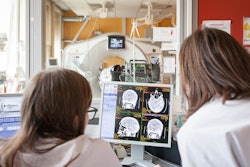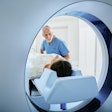
Work overload is tied to radiologists committing diagnostic errors on CT exams. That's a key finding of research from the University of Groningen in the Netherlands published on 10 August in the European Journal of Radiology.
A team led by Ömer Kasalak found that diagnostic errors occur "mostly" when radiologists go past their average daily production. It also found that such errors occur throughout the day, with no significant increase toward the end of the workday.
"The results ... show that radiologists generally worked 21% harder on days they made a diagnostic error," Kasalak and colleagues wrote. "This indicates that radiologists should exercise caution when, for reasons like imaging backlogs, clinical pressure, and understaffing, their caseload exceeds their normal daily production."
Diagnostic errors are a common occurrence in radiology, with imaging leaders trying to figure out what causes them and how to lessen their incidence. A 2013 study found that the retrospective error rate among radiologic examinations is about 30%, with real-time errors in daily radiology practice averaging 3% to 5%.
Workload has been explored as one potential cause, with imaging volumes increasing for radiologists to interpret. Kasalak et al wanted to explore potential ties between workload and diagnostic errors on clinical CT scans.
The researchers included a total of 49 diagnostic errors. These consisted of CT scans having an addendum describing an error in the original report, issued on office days between 7.30 a.m. and 6 p.m. The researchers calculated radiologist workload on the day of the diagnostic error in terms of relative value units, accounting for known average daily production of each individual radiologist. A workload normalized calculation of 100% indicated an overload in relative work in terms of reported exams on an individual radiologist's basis.
Of the 49 errors included, the top five locations included the lung (n = 8), bone (n = 8), lymph nodes (n = 5), peritoneum (n = 5), and liver (n = 4).
The team found that the normalized workload calculation on the days that the errors were made was 121% on average, significantly higher than the threshold (p = 0.008). The study authors also found no significant upward trends in errors over the course of the day, as well as no other notable temporal trends.
However, the group also found that in 15 out of 49 diagnostic errors included, the normalized workload calculations were less than 100%, indicating that increased workload is not the only reason errors are made.
The researchers suggested that with imaging volumes projected to continue increasing, healthcare policymakers should strive for a healthy balance between workload and staffing. They wrote that this can "be regarded an important precondition for radiologists to deliver high-quality care."
However, with the average daily productivity of a radiologist increasing or decreasing over time, the authors also suggested that monitoring average daily productivity numbers over more extended periods of time may be needed.
The full study can be found here.



















